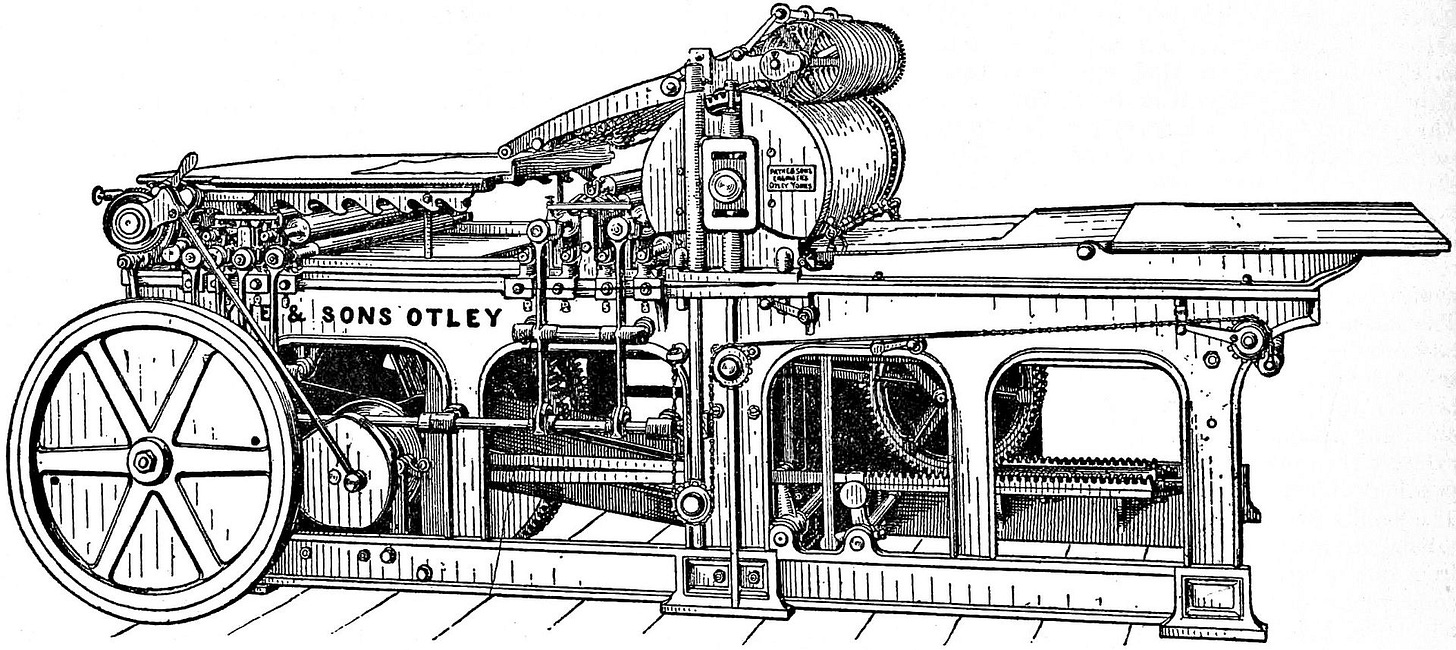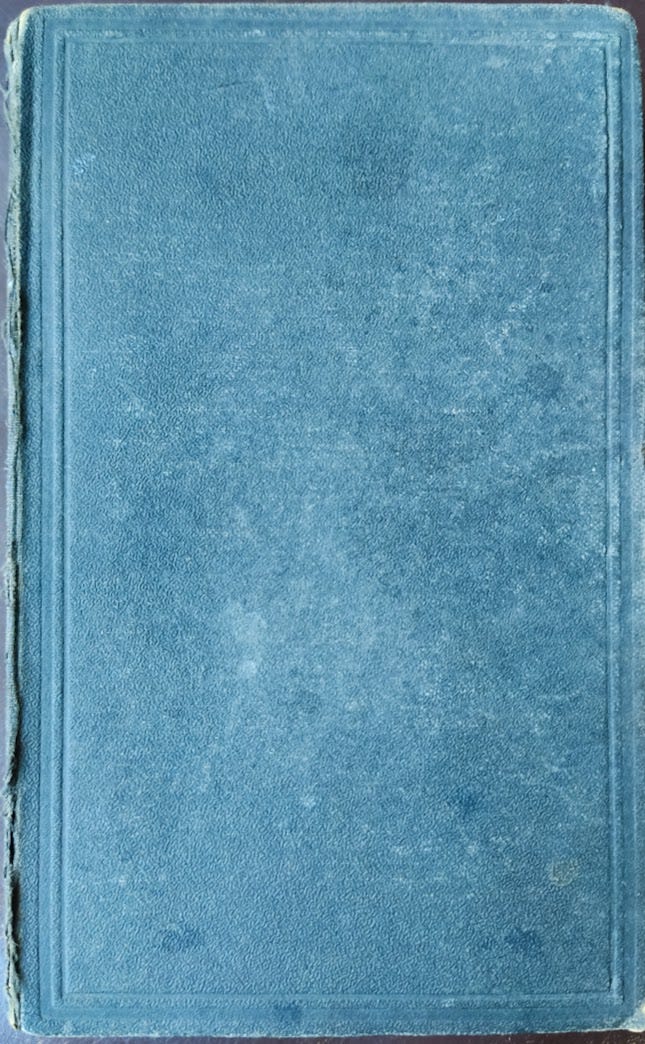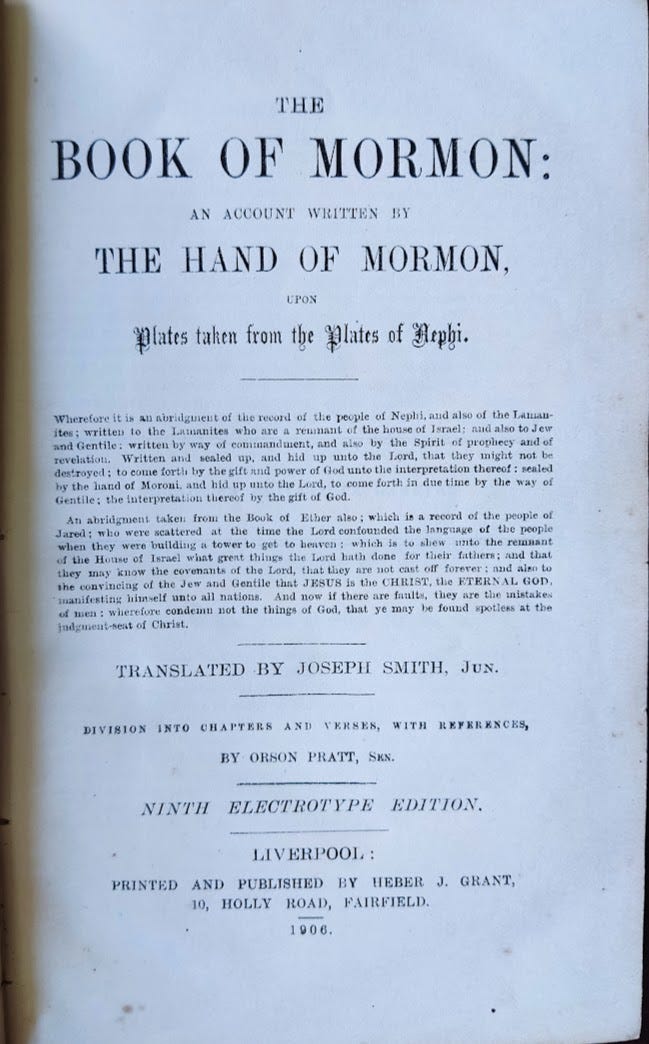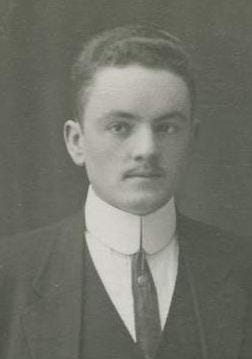"The Elders have done considerable work in Blackheath"
William Deakin and his 1906 copy of the Book of Mormon
By 1904, the British headquarters of The Church of Jesus Christ of Latter-day Saints had been based on Islington Road, Liverpool, for almost fifty years, but change was coming. Heber J. Grant, an Apostle and president of the British Mission, felt that the premises were becoming worn down and unsuitable for the needs of the mission and had found a new facility. Approvals were granted, contracts exchanged, and in April 1904, the British mission concluded the purchase of 10 Holly Road in Liverpool.
For much of its history, the British Mission had relied on distributing print materials around the British Isles and beyond. Instead of having the mission responsible for printing its materials, he had wanted to contract an external printer. Ultimately, however, it was decided that the British Mission should continue to manage its operations along with the assistance of James Foggo and his employees who worked in-house. With the property secured they purchased a new printing press, which was installed in September 1904 on the stone floor of the building’s basement.1 The Wharfedale was a stop-cylinder printing press that allowed detailed, rapid printing.
In 1906 a new edition of the Book of Mormon was printed under the direction of Heber J. Grant. It was described as the ninth electrotype edition. The first edition of the Book of Mormon to be electrotyped in Britain was Orson Pratt’s edition which was organised into chapters with footnote references. It was published under the auspices of William Budge in 1879, who was then serving as president of the British Mission.
In 1909 it was noted that “It is impossible to tell how many editions of the Book of Mormon have been published since that time, for the reason that the electrotype plates have been used repeatedly both in Utah and Great Britain without any reference to the number of editions.”2 Each issuance is more accurately viewed as a print run as there were no changes to the text between 1879 and 1920 when a major revision was undertaken. What follows is a list I have compiled of the editions/issues of the Book of Mormon published in Liverpool:
Liverpool editions of the Book of Mormon (year and listed publisher)
1841 - Brigham Young, Heber C. Kimball, and Parley P. Pratt
1849 - Orson Pratt
1852 - Franklin D. Richards
1854 - Franklin D. Richards
1854 - Orson Pratt/S. W. Richards
1866 - Brigham Young, Jun.
1879 - William Budge, 1st electrotype
1881 - Albert Carrington, 2nd electrotype
1883 - John Henry Smith, 3rd electrotype
1888 - George Teasdale, 4th electrotype
1889 - George Teasdale, 5th electrotype
1898 - Rulon S. Wells, 6th electrotype
1900 - Platte D. Lyman, 7th electrotype
1903 - Francis M. Lyman, 8th electrotype
1906 - Heber J. Grant, 9th electrotype
1909 - Charles Penrose, 9th electrotype (perhaps erroneously identified as the 9th edition?)
1912 - Rudger Clawson (triple combination)
1917 - George F. Richards (triple combination)
1920 - George Albert Smith
The Book of Mormon
I recently purchased a 1906 copy of the Book of Mormon printed under Heber J. Grant’s direction. The volume is rather unremarkable in its appearance. The cloth cover is intact but frayed on the spine’s edges. The gold leaf title is visible and the page size is double demy. The board is still solid and the pages remain well-bound. There is some foxing but it is in generally good condition for its age and considering it was used, which is evidenced by some folded corners. It was on the aforementioned printing press that this book was printed.
On the flyleaf there is a three-line inscription:
Wm Deakin
Wrights Lane
Old Hill
By June 1906, missionaries in the British Isles had sold 9,499 books to the public, which was a marked increase.3 Heber J. Grant evidently pushed and encouraged his missionaries to sell more copies of the Book of Mormon and other publications.
The electrotype plates used by Grant and others, however, were gradually worn down over time. Eventually it was decided to retire the electrotype plates and commission a new issue with re-set type which thereby allowed several improvements. The 1920 edition of the Book of Mormon underwent a significant re-working, which will be discussed in a future article.

Who was William Deakin?
The original owner of the book, if we go on the name enscribed on the flyleaf, appears to have been a “Wm. Deakin”. The address “Wrights Lane, Old Hill” is a village in the Midlands, near to Dudley and west of Birmingham.
Latter-day Saint records reveal that William Deakin was born on 29 March 1883 in Tipton, Staffordshire, England, to William and Mary Jane Deakin. William’s father died when he was young and in 1891 he was living with his mother and younger sister in the Dudley Union workhouse. Ten years later, then aged 18, William was living with the Hingley family. Joseph Hingley was a chainmaker and William may have been working with him in some capacity, but it was a profession he continued in for the rest of his life. By the 1911 census William was living with his mother at 154 Wrights Lane, Old Hill, and he was recorded as working as a Block Chain Maker. In 1930 the Deakins were living at 14 Petford Street, Old Hill. When the 1939 national registration took place he was again listed as a chainmaker and the family was still living in Petford Street.
William appears to have lived around the Blackheath area and the Midlands generally for his whole life. In the early 1900s, Latter-day Saint missionaries had recommenced working around the Blackheath area in a concerted manner. A missionary serving in the area at the time described conditions:
The Elders have done considerable work in Blackheath, and although they have made some good friends, prospects have not seemed very encouraging. During the last few months, however, there has been a change. Through our tracting there has been more demand for our evening fireside chats upon the Gospel than we have been able to supply. Our work has not been without some opposition, yet just enough to show all sensible, thinking people who are the real Christians. We have tried to take advantage of this favorable condition, and I feel we have been quite successful, for the many friends we have made have ever a hungry desire to learn more of the truth. "Cottage meetings only have been held, but developments have been rapid, as though a common desire for truth had suddenly swept over this neighborhood, that it became necessary to open a hall. Our first start, a district meeting, was held in the Handel Assembly Rooms, on Sunday, October 29th. In the afternoon only about fifty were present, but long before 6:30 in the evening people began to pour in, until when the time arrived to open, the hall was filled with anxiously awaiting people.4
By December 1906 there had been 41 baptisms in the Blackheath branch.5 From Blackheath there was a remarkable number of accounts of healing with individuals writing to the Star to share their experiences. One such letter from Sarah Patrick related how in 1906 missionaries had been leaving tracts, small missionary publications, at her home and later she had been healed from an illness.6
We don’t know how William first came into contact with the church, but this was a busy time with tracts circulating, open air preaching, people joining the church, and publicity in the press. Whatever happened, William was one of fourteen people baptised on 18 August 1907 at the Dudley Public Baths. He was baptised by Bert Hymas and confirmed by John White on the same day. The following was recorded in the Millennial Star:
"It gives me pleasure to report that the work of the Lord is progressing in this the Lye district. A baptismal service was held at Dudley Public Baths, on the 14th inst., when nine members were added to Dudley branch. Elders Joseph H. Butler and Arthur L. Howard officiated. Another baptism took place on the 18th inst., when Blackheath branch received an addition of fourteen new members. The officiating Elders were: John N. White, Enoch Russon and Bert S. Hymas. Confirmations took place at the services held at Blackheath Sunday morning last, and at Dudley in the evening of the same day. The outlook in this district is quite encouraging."7
The Blackheath branch grew quickly and the members clearly appreciated and loved the missionaries as evidenced by the following account of one of the many social activities:
Successful Farewell Socials. —A very enjoyable social was held at No. 2 Park Street, Blackheath, on the 13th inst., in honor of Elder John N. White, who has been honorably released and left for home to-day. About fifty-five Saints and investigators, together with fourteen Elders of the Birmingham conference, were present. The evening was spent in songs, recitations, speeches, etc. Elder Enoch Russon, in behalf of the members of the Blackheath branch, presented Elder White with a beautiful traveling rug, accompanied by a letter, expressing the heartfelt thanks of each one for his untiring efforts and labors among them, wishing him a pleasant and safe return home to his loved ones in Zion. A response was given by Elder White, thanking the donors for the handsome gift, which he highly appreciated, and would keep in fond remembrance. He invoked the blessings of the Lord upon them. After refreshments had been served and the benediction pronounced, a general hand-shaking took place, when a very pleasant evening was brought to a close.—Elder Enoch Russon.
However, the Saints in Blackheath/Old Hill were facing difficulties. Some of the strongest members had emigrated, there was still animosity towards the church in the area, and persecution continued to abound. As one record noted in 1913:
President Warren S. Tew went to Old Hill to visite [sic] the Saints of that Branch. Found thing [sic] in very good condition considering that they have no hall to meet in.8
There was likely several reasons for the lack of meeting places. During this time leaders were constantly requesting police support for meetings around Birmingham due to the violence from those antagonistic towards the church. At one baptismal service a mob formed outside and were “shoot[ing] guns off.”9
Nonetheless, on 26 March 1916, in the midst of the First World War, William was ordained a priest by George Eldredge, a young missionary who had been re-assigned to the British Isles from South Africa on account of the war. He was ordained at a conference of the three branches in Birmingham: Handsworth, Saltley, and Sparkbrook. At the evening meeting there was an audience of about 125 people.10
Eventually many branches, such as Blackheath, were combined on account of the difficulties caused by the war. In later years William was a member of the Handsworth branch, but at this point it is unclear how often he attended. Over the years missionaries and local leaders would visit the remaining Saints living in Blackheath, Old Hill, Tipton, and other areas, which would have included William Deakin.11
In the British Isles there have often been periods of expansion and contraction. There are many core units that have operated continuously since the nineteenth century, but many smaller congregations have served for a time according to the needs of local members and the capacity of local missionaries and members.
Provenance
After William’s death, it appears that his copy of the Book of Mormon was kept by his only child, Miriam. She died in 2015 at age 89. She never joined the Church but associated herself with the Church of England. She had kept hold of her father’s copy of the Book of Mormon for reasons unknown. Perhaps she kept it because it was important to him, or maybe it remained forgotten on a bookshelf or in a box, lost among other possessions. Maybe she couldn’t bear to throw anything out. In any case, it was put up for auction in November 2023 and I was fortunate to purchase it for my church history collection with a view to sharing it with others.
A word of thanks
It is because of subscribers such as yourself that these acquisitions are possible. Thank you for your continued support. I have some exciting free and paid subscriber articles coming up to share with you but if you are ever after a particular story or have a question then please don’t hesitate to get in contact!
This book will be used in future exhibitions and at events to educate and inspire others about Latter-day Saint history.
C. Nephi Anderson, journal, 13 September 1904, MS 5619, bx. 5, fd. 17, CHL; and ‘Untitled,’ The Latter-day Saints Millennial Star, Vol. 66, No. 37 (1904), p. 586.
Joseph Fielding [F.] Smith, ‘Growth of the Church,’ The Latter-day Saints’ Millennial Star, Vol. 71, No. 23 (1909), p. 357.
Letter from Heber J. Grant to George Reynolds, 26 July 1906, CR 1 174, bx. 4, fd. 17, CHL.
‘From the Mission Field,’ The Latter-day Saints’ Millennial Star, Vol. 67, No. 46 (1905), pp. 732-733.
‘From the Mission Field,’ The Latter-day Saints’ Millennial Star, Vol. 68, No. 52 (1906), p. 831.
‘The Lord’s Power Made Manifest,’ The Latter-day Saints’ Millennial Star, Vol. 71, No. 7 (1909), pp. 107-108.
‘From the Mission Field,’ The Latter-day Saints’ Millennial Star, Vol. 69, No. 34 (1907), pp. 541-542.
Birmingham Conference general minutes, 1851-1959, 9 October 1913, volume 8, LR 736 11, bx. 1, fd. 8, CHL.
Birmingham Conference general minutes, 1851-1959, 28 September 1913, volume 8, LR 736 11, bx. 1, fd. 8, CHL.
Birmingham Conference general minutes, 1851-1959, 26 March 1916, volume 8, LR 736 11, bx. 1, fd. 8, CHL.
Birmingham Conference general minutes, 1851-1959, 29 August 1914, volume 8, LR 736 11, bx. 1, fd. 8, CHL.







